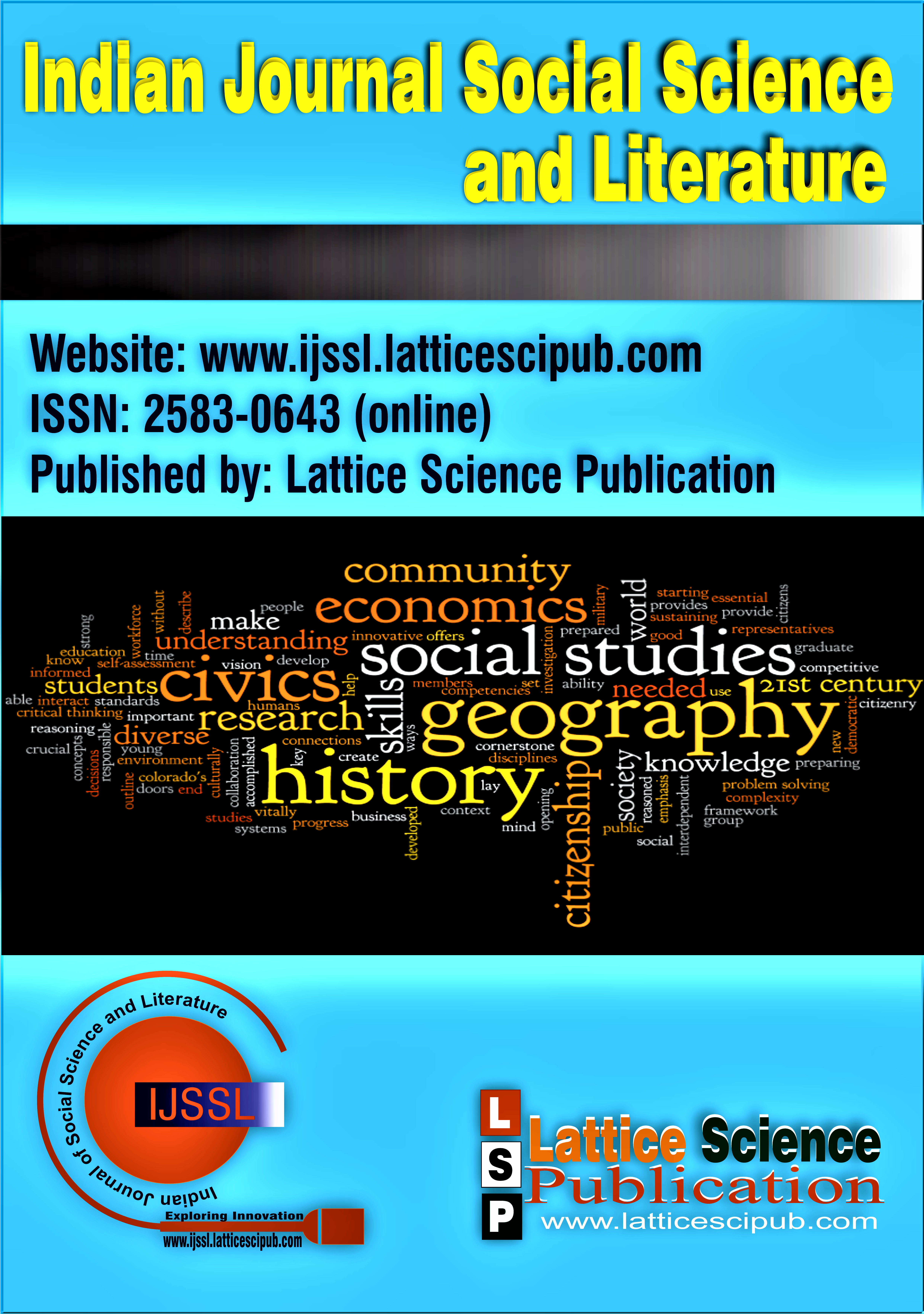“Religious Practice Assessment: An In-Depth Analysis”
Main Article Content
Abstract
To interpret the religious freedom provisions, the Supreme Court of India created the Doctrine of Essential Religious Practises, or "ERP." In its techniques and tactics, the ERP doctrine fosters gender discrimination, making it a dysfunctional legal dynamic that is contributing to a process of de-secularization, according to the report. A different normative approach is also proposed in the study. A model that achieves constitutional morality may be the one recommended by the author to be used in the interpretive endeavour. The model will examine constitutional meaning to situate the harmonious vision that the judiciary has failed to accomplish in its repeated attempts to resolve disputes between claims of religious nature. The issue in the context of gender will become clear through the doctrinal study of recent decisions via the theoretical lens of constitutional principles. This essay examines the Supreme Court's Doctrine of Essential Religious Practises and Religious Freedom clauses as a means of interpreting religion's reach, bounds, and potential for differentiating religious from secular beliefs. It also demonstrates how these analyses are not focused on advancing the cause of gender justice. The Triple Talaq case, despite its honourable conclusion, will be examined to highlight the detrimental effects of the ERP philosophy.
Downloads
Article Details

This work is licensed under a Creative Commons Attribution-NonCommercial-NoDerivatives 4.0 International License.
How to Cite
References
Singh Joharv. Union of India, AIR2018SC4321
Gautam Bhatia, The Transformative Constitution: A Radical Biographyin Nine Acts, Harper Collins,201
Suresh Kumar Koushalv. Naz Foundation, (2014)1SCC1.
Indian Young Lawyers Association &Ors.v. TheStateofKerala&Ors.,201911SCC
lbid
lbid
Gautam Bhatia, The Transformative Constitution: A Radical Biographyin Nine Acts, Harper Collins,2019.
AIR1952 BOM 84.
Shayara Banov. UnionofIndia,(2017)9SCC1
Faizan Mustafa and Jagteshwar Singh Sohi, Freedom of Religionin India: Current Issues and Supreme Court Acting as Clergy, 2017 BYU L. Rev. 915 (2018), available at:https://digitalcommons.law.byu.edu/lawreview/vol2017/iss4/9
Gautam Bhatia, The Supreme Courts’ Triple Talaq Judgement, INDIAN CONSITUTIONAL LAW ANDPHILOSOPHY, August 22,2017, available at,https://indconlawphil.wordpress.com/2017/08/22/the-supreme-courts-triple-talaq-judgment/ (Lastvisitedat september,2023)
Lbid
Faizan Mustafa and Jagteshwar Singh Sohi, Freedom of Religionin India: CurrentIssuesand Supreme Court Acting as Clergy, 2017 BYU L. Rev. 915 (2018), available at: https://digitalcommons.law.byu.edu/lawreview/vol2017/iss4/9
Shayara Bano v. Union of India, (2017) 9 SCC 1. (Kurian J)
Gautam Bhatia, The Supreme Courts’ Triple Talaq Judgement, INDIAN CONSITUTIONAL LAW ANDPHILOSOPHY, August 22,2017, available at,https://indconlawphil.wordpress.com/2017/08/22/the-supreme-courts-triple-talaq-judgment/ (Lastvisitedat 24/09/2023).
Article25, Constitution ofIndia1950
Article26, Constitution ofIndia1950.
Hindu Religious Endowments, Madrasv. Shri Lakshmindra Thirtha Swamiar of Sri Shirur Mutt, AIR1954SC282.
Sen, Aparaji to, “Interpreting group-based religious freedoms: Sabarimala and the movement from definitions to limitations”, NALSAR Student Law Review,(2021)15.pp.1-26,availableathttps://nslr.in/wp-content/uploads/2021/09/Vol-XV-Pgs.-25-50.pdf
Sri Venkataramana Devaru and Othersv.TheStateofMysoreandOthers,1958 SCR895
Indian Young Lawyers Association & Ors.v. TheStateofKerala&Ors.,201911SCC
Anup Surendranath, ‘Essential Practices Doctrine’: Towards an Inevitable Constitutional Burial, Journal of the National Human Rights Commission (2017),https://nhrc.nic.in/sites/default/files/nhrc_journal_2017.pdf
Mandava, L. C. (2023). Transforming Organizational Development with AI: Navigating Change and Innovation for Success. In International Journal of Engineering and Advanced Technology (Vol. 13, Issue 1, pp. 13–28). https://doi.org/10.35940/ijeat.a4282.1013123
P. K., M. (2019). Competitiveness of Manufacturing Industry in India: Need for Flexible Manufacturing Systems. In International Journal of Innovative Technology and Exploring Engineering (Vol. 8, Issue 12, pp. 3041–3047). https://doi.org/10.35940/ijitee.k2452.1081219
Sharma, D., & Sharma, Dr. P. (2023). Comparison of the Proposed Rainfall Prediction Model Designed using Data Mining Techniques with the Existing Rainfall Prediction Methods. In Indian Journal of Data Mining (Vol. 3, Issue 2, pp. 7–10). https://doi.org/10.54105/ijdm.b1627.113223
Irwan, Anwar, S., Atmazaki, & Efi, A. (2020). An Analysis of Musical Teachers Abilities in Implementing the Authentic Assessment at SMK 7 Padang Indonesia. In International Journal of Management and Humanities (Vol. 5, Issue 3, pp. 7–9). https://doi.org/10.35940/ijmh.b1152.115320
Arora, S. (2023). Secularism in India: Exploring its Reality, the 42nd Amendment, and its Relation to Article 370 of the Constitution. In Indian Journal of Social Science and Literature (Vol. 3, Issue 2, pp. 14–18). https://doi.org/10.54105/ijssl.b1077.123223





